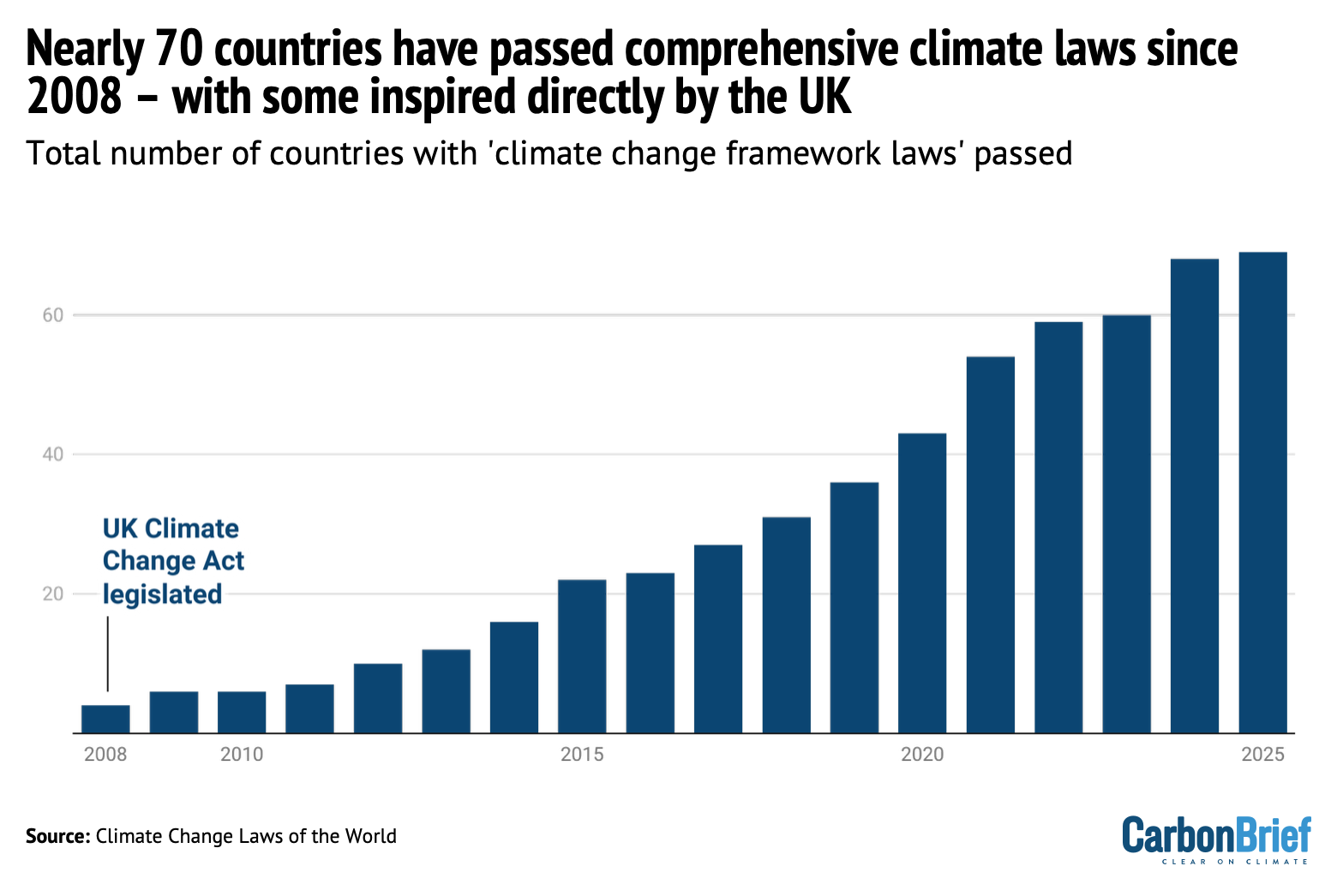China spent much more than any other nation on the energy transition last year, but spent less overall than it did in 2022.
Electrified transportation sped past renewable energy last year to become the world’s largest category of energy transition investment.
Electrified Transport Investment Soared Globally in ’23, Passing Renewable Energy
Climate Change
A Michigan Town Hopes to Stop a Data Center With a 2026 Ballot Initiative
Local officials see millions of dollars in tax revenue, but more than 950 residents who signed ballot petitions fear endless noise, pollution and higher electric rates.
This is the second of three articles about Michigan communities organizing to stop the construction of energy-intensive computing facilities.
A Michigan Town Hopes to Stop a Data Center With a 2026 Ballot Initiative
Climate Change
The AI Data Center Boom Comes to Vernon
While nationwide, neighborhoods have fought to keep the electricity- and water-hungry data centers away, Vernon is welcoming another data center, seemingly without opposition.
At the corner of 48th Street and Santa Fe Avenue in industrial Vernon, a three-story building looms large among rumbling factories and warehouses. Long, vertical, tinted windows with green outlines punctuate the two-acre structure’s grey and white facade–all in the service of keeping its tenants cool inside. Its tenants aren’t people, but giant servers, storage drives and networking equipment.
Climate Change
DeBriefed 10 October 2025: Renewables power past coal; Legacy of UK’s Climate Change Act; Fukushima’s solar future
Welcome to Carbon Brief’s DeBriefed.
An essential guide to the week’s key developments relating to climate change.
This week
Renewables overtake coal
‘HISTORIC FIRST’: Renewables have overtaken coal to become the world’s leading source of electricity for the first six months of this year in a “historic first”, BBC News said. The analysis, from the thinktank Ember, found the world generated “almost a third” more solar power in the first half of the year, compared with the same period in 2024, while wind power grew by “just over 7%,” reported the Guardian.
HEAVY LIFTING: According to the report, China and India were “largely responsible for the surge in renewables”, while the US and Europe “relied more heavily on fossil fuels,” the Guardian wrote. China built more renewables than every other country combined in the first half of this year, the newspaper added.
CONTINENTAL SHIFTS: A second report from the International Energy Agency (IEA) predicted a “surge” in global wind and solar capacity by 2030, but shaved 5% off its previous forecast, the Financial Times said. The IEA revealed that India is set to become the second-largest growth market for renewables after China, “with capacity expected to increase 2.5 times by 2030”, Down to Earth reported. The IEA also upped its forecast for renewables in the Middle East and north Africa by 23%, “helped by Saudi Arabia rolling out wind turbines and solar panels”, but halved the outlook for the US, the FT noted.
Around the world
- EV BOOM: Sales of electric and hybrid cars made up “more than half” of all new car registrations in the UK last month, a new record, according to data from the Society of Motor Manufacturers, reported BBC News.
- BANKING COLLAPSE: A global banking alliance launched by the UN to get banks to slash the carbon footprint of their loans and investments and help drive the transition to a net-zero economy by 2050 has collapsed after four years, Agence France-Press reported.
- CUTS, CUTS, CUTS: The Trump administration plans to cut nearly $24bn in funding for more than 600 climate projects across the US, according to documents reviewed by the Wall Street Journal.
- PEOPLE POWER: A farmer, a prison guard and a teacher were among those from the Dutch-Caribbean island Bonaire who appeared at the Hague on Tuesday to “accuse the Netherlands of not doing enough to protect them from the effects of climate change”, Politico reported.
400,000
The number of annual service days logged by the US National Guard responding to hurricanes, wildfires and other natural disasters over the past decade, according to a Pentagon report to Congress, Inside Climate News reported.
Latest climate research
- Politicians in the UK “overwhelmingly overestimate the time period humanity has left to bend the temperature curve”, according to a survey of 100 MPs | Nature Communications Earth and Environment
- Fire-driven degradation of the Amazon last year released nearly 800m tonnes of CO2 equivalent, surpassing emissions from deforestation and marking the “worst Amazon forest disturbance in over two decades” | Biogeosciences
- Some 43% of the 200 most damaging wildfires recorded over 1980-2023 occurred in the last decade | Science
(For more, see Carbon Brief’s in-depth daily summaries of the top climate news stories on Monday, Tuesday, Wednesday, Thursday and Friday.)
Captured

The UK’s Climate Change Act, landmark legislation that guides the nation’s response to climate change, is increasingly coming under attack from anti-net-zero right-leaning politicians. In a factcheck published this week, Carbon Brief explained how the UK’s Climate Change Act was among the first comprehensive national climate laws in the world and the first to include legally binding emissions targets. In total, 69 countries have now passed “framework” climate laws similar to the UK’s Climate Change Act, with laws in New Zealand, Canada and Nigeria among those explicitly based on the UK model. This is up from just four when the act was legislated in 2008. Of these, 14 are explicitly titled the “Climate Change Act”.
Spotlight
Fukushima’s solar future
This week, Carbon Brief examines how Fukushima helped to recover from nuclear disaster by building solar farms on contaminated farmland.
On 11 March 2011, an earthquake off the pacific coast of Japan caused 15m-tall waves to crash into the eastern region of Tōhoku, killing 19,500 people and injuring a further 6,000.
In the aftermath, flooding at the Fukushima Daichi nuclear power plant caused cooling systems to fail, leaching radioactive contaminants into the soil and leading to a major nuclear incident.
Some 1,200km2 around the site was restricted and up to 100,000 people were evacuated – in some cases forever.
In the years following, Japan entered a fraught debate about nuclear energy.
In 2010, nuclear power provided 25% of Japan’s electricity, but, in the years following the disaster, its 54 nuclear reactors were taken offline.
Successive governments have fought over reintroducing nuclear power. Today, some 14 reactors are back online, 27 have been permanently closed and another 19 remain suspended. (Japan’s newly-elected prime minister Sanae Takaichi has promised to make nuclear central to her energy strategy.)
Against this backdrop, Fukushima – a prefecture home to 1.8 million people – has emerged as a surprise leader in the renewables race.
In 2014, the Fukushima Renewable Energy Institute (FREA) opened with the twin goals of promoting research and development into renewable energy, while “making a contribution to industrial clusters and reconstruction”.
That same year, the prefecture declared a target of 100% renewable power by 2040.
Contaminated land
“A lot of these communities, I know, were looking for ways to revitalise their economy,” said Dr Jennifer Sklarew, assistant professor of energy and sustainability at George Mason University and author of “Building Resilient Energy Systems: Lessons from Japan”.
Once evacuation orders were lifted, however, residents in many parts of Fukushima were faced with a dilemma, explained Skarlew:
“Since that area was largely agricultural, and the agriculture was facing challenges due to stigma, and also due to the soil being removed [as part of the decontamination efforts], they had to find something else.”
One solution came in the form of rent, paid to farmers by companies, to use their land as solar farms.
Michiyo Miyamoto, energy finance specialist at the Institute for Energy Economics and Financial Analysis, told Carbon Brief:
“The [Fukushima] prefecture mapped suitable sites early and conducted systematic consultations with residents and agricultural groups before projects were proposed. This upfront process reduced land-use conflicts, shortened permitting timelines and gave developers clarity.”
As a result, large-scale solar capacity in Fukushima increased to more than 1,300 megawatts (MW) from 2012 to 2023, according to Miyamoto. Moreover, installed renewable capacity now exceeds local demand, meaning the region can run entirely on clean power when conditions are favourable, Miyamoto said.
Today, aerial pictures of Fukushima reveal how solar panels have proliferated on farmland that was contaminated in the nuclear disaster.

Charging on
Last year, 60% of Fukushima’s electricity was met by renewables, up from 22% in 2011. (The country as a whole still lags behind at 27%.)
And that is set to grow after Japan’s largest onshore windfarm started operations earlier this year in Abukuma, Fukushima, with a capacity of 147MW.
The growth of solar and wind means that Fukushima is already “ahead of schedule” for its 2040 target of 100% renewable power, said Miyamoto:
“The result is a credible pathway from recovery to leadership, with policy, infrastructure and targets working in concert.”
Watch, read, listen
OVERSHOOT: The Strategic Climate Risks Initiative, in partnership with Planet B Productions, has released a four-part podcast series exploring what will happen if global warming exceeds 1.5C.
DRONE WARFARE: On Substack, veteran climate campaigner and author Bill McKibben considered the resilience of solar power amid modern warfare.
CLIMATE AND EMPIRE: For Black history month, the Energy Revolution podcast looked at how “race and the legacies of empire continue to impact the energy transition”.
Coming up
- 12 October: presidential elections, Cameroon
- 13-14 October: Pre-COP, Brasilia, Brazil
- 13-18 October: World Bank Group/IMF annual meetings, Washington DC
- 14-17 October: 2nd extraordinary session of the Marine Environment Protection Committee at the International Maritime Organisation, London
- 15-16 October: Circle of Finance Ministers report
Pick of the jobs
- Buckinghamshire Council, principal climate change officer | Salary: £49,354-£51,759. Location: Aylesbury, Buckinghamshire
- Sustainable NI, sustainable business lead | Salary: £60,000. Location: Belfast, Northern Ireland
- Dialogue Earth, South Asia managing editor | Salary: £1,875 per month. Location: South Asia
DeBriefed is edited by Daisy Dunne. Please send any tips or feedback to debriefed@carbonbrief.org.
This is an online version of Carbon Brief’s weekly DeBriefed email newsletter. Subscribe for free here.
The post DeBriefed 10 October 2025: Renewables power past coal; Legacy of UK’s Climate Change Act; Fukushima’s solar future appeared first on Carbon Brief.
-
Climate Change2 years ago
Spanish-language misinformation on renewable energy spreads online, report shows
-
Climate Change2 months ago
Guest post: Why China is still building new coal – and when it might stop
-
Climate Change Videos2 years ago
The toxic gas flares fuelling Nigeria’s climate change – BBC News
-

 Greenhouse Gases1 year ago
Greenhouse Gases1 year ago嘉宾来稿:满足中国增长的用电需求 光伏加储能“比新建煤电更实惠”
-

 Climate Change1 year ago
Climate Change1 year ago嘉宾来稿:满足中国增长的用电需求 光伏加储能“比新建煤电更实惠”
-
Greenhouse Gases2 months ago
Guest post: Why China is still building new coal – and when it might stop
-

 Carbon Footprint2 years ago
Carbon Footprint2 years agoUS SEC’s Climate Disclosure Rules Spur Renewed Interest in Carbon Credits
-
Renewable Energy3 months ago
US Grid Strain, Possible Allete Sale











